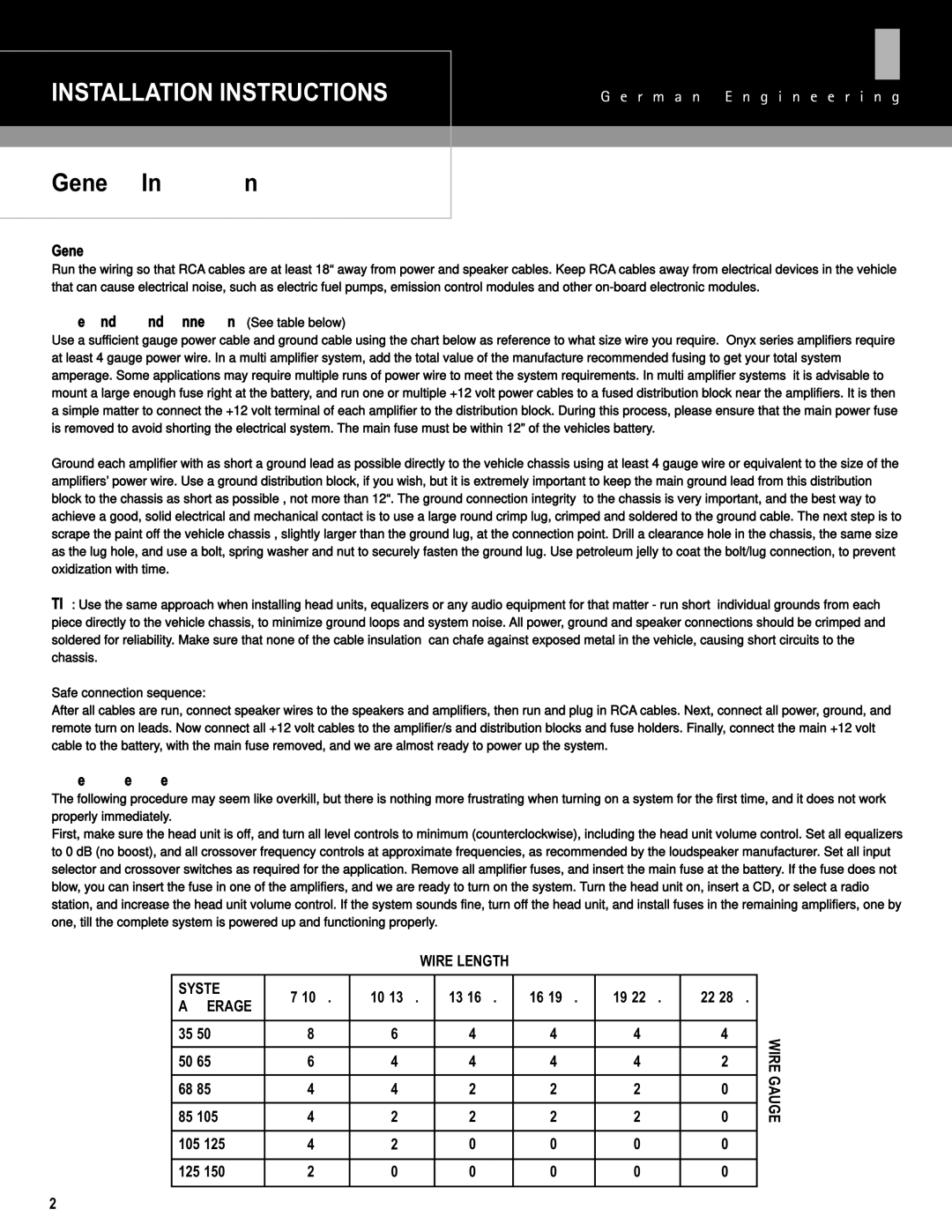ONX1.1500D, ONX4.125, ONX4.80/500, ONX1.1000D, ONX2.100 specifications
MB Quart, a renowned name in the audio industry, has made a significant impact with its ONX series, which includes models like the ONX4.80, ONX4.60, ONX2.100, ONX1.1000D, and ONX4.80/500. These amplifiers are designed to deliver powerful audio performance while being versatile enough to cater to various needs in the automotive sound sector.The ONX4.80 is a 4-channel amplifier capable of delivering a robust 80 watts RMS per channel at 4 ohms, showcasing a total power output of 500 watts. This model incorporates a unique class-D topology that provides high efficiency and low distortion, ensuring that users can enjoy crisp sound quality without draining their vehicle’s power supply. Its compact design allows for easy installation in tight spaces, making it an ideal choice for both experienced installers and DIY enthusiasts.
Meanwhile, the ONX4.60, a slightly smaller 4-channel amplifier, offers 60 watts RMS per channel at 4 ohms, with a similar class-D configuration. This amplifier is particularly well-suited for users looking to power smaller speaker setups or as part of a multi-amplifier system. Its low-profile design and excellent thermal management features further enhance its performance, providing reliable power during extended listening sessions.
For those in need of monoblock power, the ONX1.1000D stands out with its impressive ability to deliver 1,000 watts RMS at 1 ohm. This amplifier is engineered to drive subwoofers with ease, thanks to its high-efficiency operation and comprehensive thermal protection circuitry. The ONX1.1000D also features an adjustable low-pass filter and bass boost controls, allowing users to tailor their low-frequency output to suit their specific preferences.
The ONX2.100, a 2-channel amplifier, rounds out the range with a strong 100 watts RMS per channel at 4 ohms. It is perfect for driving full-range speakers or as part of a larger multi-channel setup. Like its counterparts, the ONX2.100 employs advanced circuitry for low noise and high fidelity, making it an excellent choice for any audio enthusiast looking to enhance their vehicle’s sound system.
Collectively, the ONX series amplifiers from MB Quart embody robust performance, compact design, and superior technology, making them an ideal choice for anyone looking to elevate their automotive audio experience. Whether users seek powerful lows, clear mids, or crisp highs, there is an ONX model tailored to meet those needs while maintaining reliability and efficiency.

